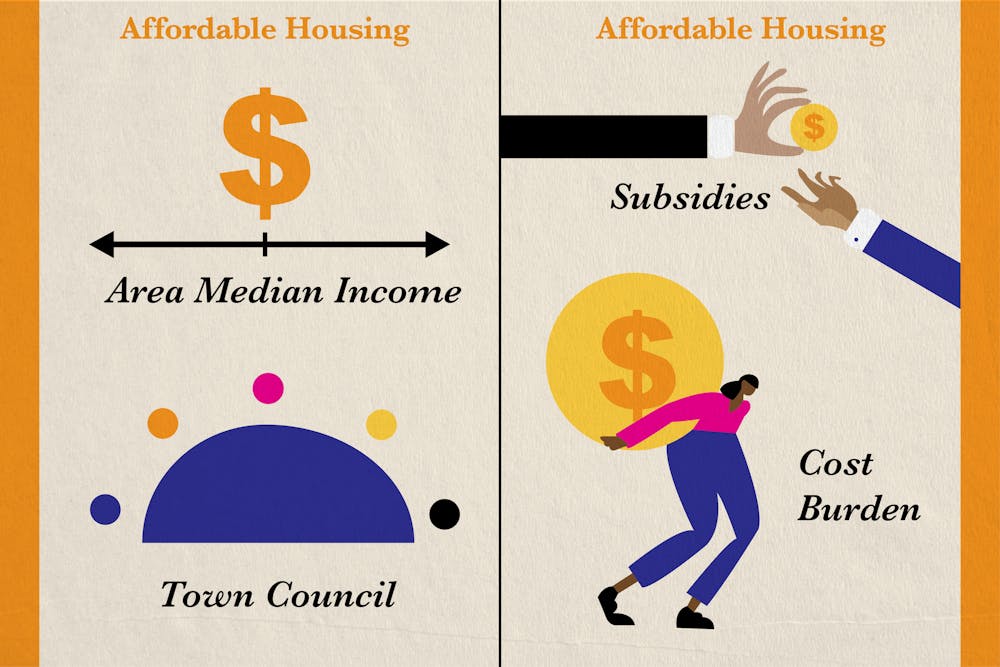During those marathon town council meetings, it seems like elected officials, Town staff and developers can use their own vocabularies to discuss affordable housing. The words don't make sense to an untrained ear. Cost burden, AMI, LUMO — what does any of it actually mean?
Talking about affordable housing can be confusing. Here's a breakdown of the important words, acronyms and phrases to know before stepping into your next town council meeting.
Units are, very simply, the amount of apartments or houses or townhomes a development has. If there are 50 units in an apartment complex, there are 50 apartments.
Town councils, in Chapel Hill and Carrboro, vote on and either approve or deny affordable housing projects (along with a whole bunch of other stuff). They vote on these projects just like a larger elected body does, working with Town staff and the people proposing the development to figure out all the details.
Again, these are elected officials, and election rhetoric often makes its way back to affordable housing and the decisions town council members made. This past election cycle was a prime example.
Developers are often the main driving forces of the affordable housing scene. Much of the time, towns like Chapel Hill or Carrboro do not have the funds to build and maintain their own affordable housing projects, so they rely on developers to come along and propose projects that contain affordable housing. Developers have been a point of contention in recent election cycles – many candidates expressly denied donations from developers.
AMI is an area's median income.A lot of the time, this is how affordable housing is measured. For instance, a town council member may ask a developer, 'How many units are under 30 percent AMI?' Essentially, the council member is asking how many units are priced for people who earn 30 percent or less of the area median income. Much of the time, AMI is discussed in 10 percent intervals, from about 30 to 80 percent.
Subsidies are often required to build and maintain affordable housing. It is often very costly to a developer to build a housing development and then rent those units below the local market rate (a measurement of how much non-subsidized housing costs elsewhere in the community).
So, subsidies are required to keep costs down for the tenant. Often, subsidies are sent from higher levels — the county, the state or the federal government — or nonprofits.



